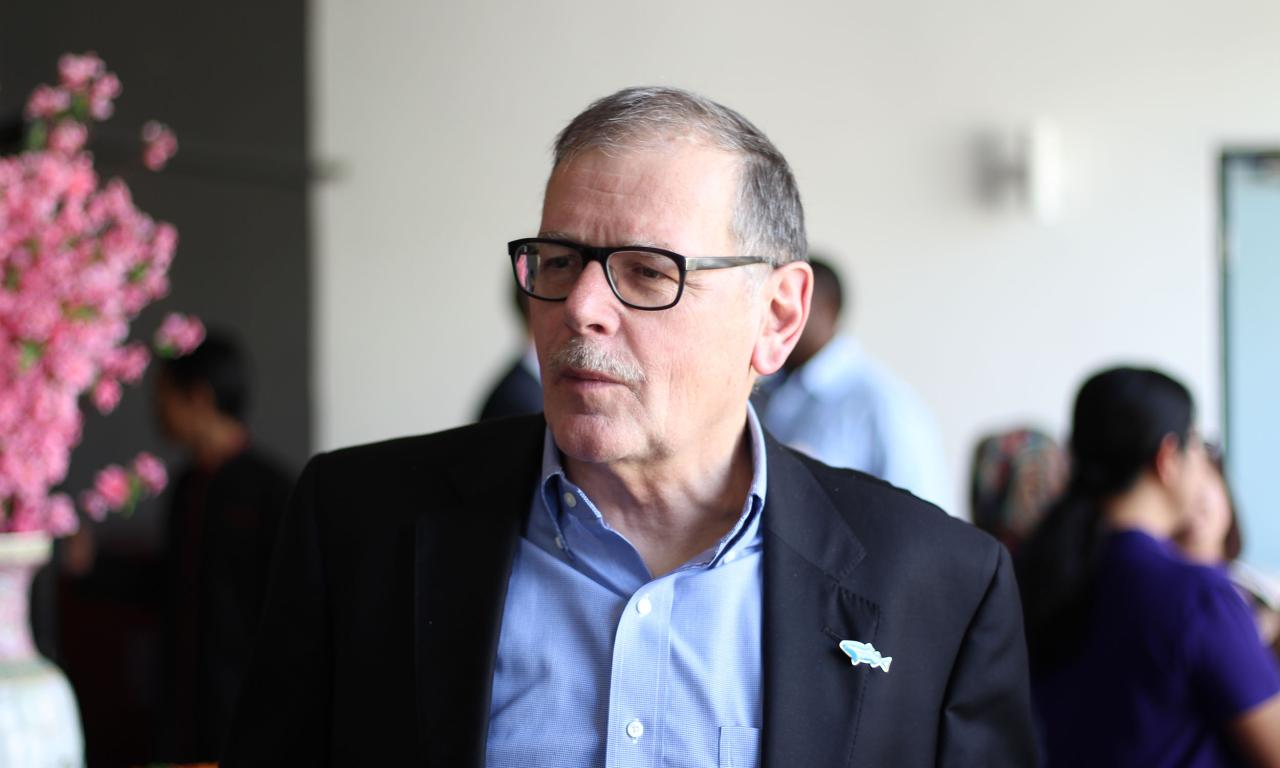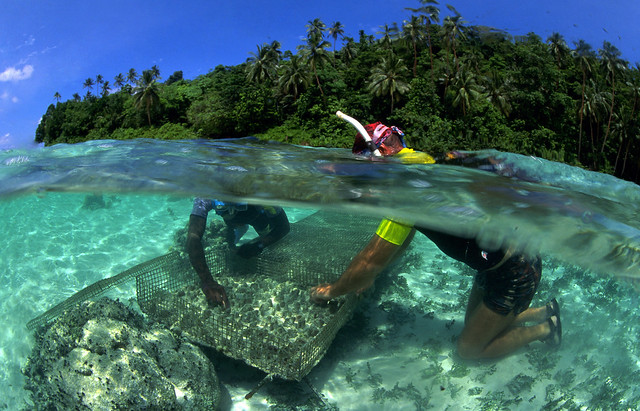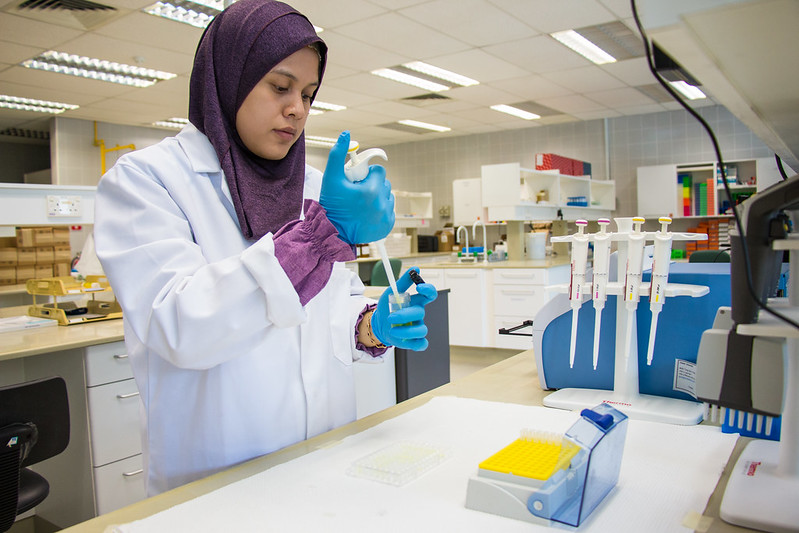
Marco Ferroni praised WorldFish for the clarity of its purpose during his first visit to the center’s headquarters since being appointed as Chair of the CGIAR System Management Board.
Recommended publications
- Blue harvest: Inland fisheries as an ecosystem service
- Breeding for robustness: Investigating the genotype-by-environment interaction and micro-environmental sensitivity of Genetically Improved Farmed Tilapia (Oreochromis niloticus)
- Public and private partnerships in aquaculture: A case study on tilapia research and development
“WorldFish is a wonderful and unique organization, and the world needs to know more about your work and your brand,” said Marco Ferroni, Chair of the CGIAR System Management Board, during a presentation to staff at the WorldFish headquarters in Penang, Malaysia.
“I’m very impressed by the clarity of your purpose and therefore of your brand,” Ferroni said, adding, “I think that branding—and rebranding—for us [CGIAR] to be able to react to new opportunities and needs in an evolving and changing world is something we need to pay a lot more attention to.”
WorldFish is one of the 15 centers that make up the CGIAR, a global agriculture research partnership for a food secure future.
Ferroni’s presentation, which outlined the rationale behind the intensified systems thinking across all of the CGIAR centers, was part of his first visit to WorldFish since his appointment as chair in July 2017.
Over the course of five days, Ferroni met with the executive team and research leaders to learn more about the organization’s work and strategic direction. He also toured the WorldFish offices and research facilities and joined staff for a special high tea.
Blue world of opportunity
During the meeting with the leadership team, Director General Gareth Johnstone noted the importance of fish in the CGIAR’s food system transformation.
“With its focus on fisheries and aquaculture, WorldFish is the only CGIAR center that is able and currently working to contribute to SDG 14, Life below water,” he said. “Fish is also the only food-source protein that can be produced in saltwater, offering unique advantages for climate-resilient production.”
He was echoed by Cynthia McDougall, Gender Research Leader for WorldFish and FISH, who emphasized the increasing global interest in the blue economy—which encompasses the governance of and access to oceans and aquatic resources including specific targets on small-scale fisheries—and the “blue world of opportunity” it presents for the CGIAR.
“WorldFish, with its unique focus on and contribution to the achievement of SDG 14, can fill the huge gap in research knowledge and the discourse around the blue economy,” she said.
John Benzie, Acting Program Leader, Sustainable Aquaculture, then highlighted recent advancements in WorldFish’s pioneering genetics research.
WorldFish has used selective breeding to develop and manage genetically improved farmed tilapia (GIFT) since 1988. The fast-growing strain is now grown by millions of small-scale fish farmers, mostly in the developing world, for food, nutrition and income.
Use of genomic selection tools, which enable the selection of animals based on genetic markers, is allowing WorldFish to expand its GIFT research beyond a growth-only focus and introduce selection for characteristics that are otherwise difficult to measure, such as resilience and feed efficiency.
Private sector as a force for delivery
The discussion also touched on public-private partnerships and the role of these in disseminating GIFT and other technologies to deliver impact.
Public-private partnerships are a crucial link for food system transformation, Ferroni said. This is because of the rise of the private sector in agriculture and aquaculture, both on the input and output side.
“In this context, we, as a [CGIAR] system, should be looking to the private sector, where appropriate, as a force for delivery of some of the conclusions, solutions and technologies we are developing.”
WorldFish is increasingly exploring such options. A recent example is a strategic collaboration with the aquafeed company Skretting, which aims to roll out best management practices and affordable, proven technologies to small-scale farmers, initially in Egypt and Zambia.


